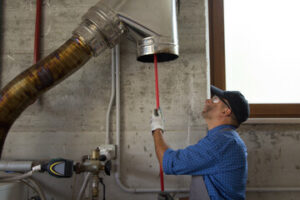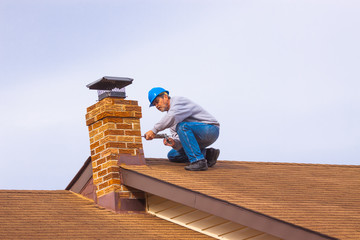Chimneys are the heart of the home heating process. They play a key role in keeping your family warm but can also be a fire hazard. If you have a fireplace, cleaning the chimney is an important part of the maintenance cycle. It’s common to see chimneys covered in thick ash and creosote, so cleaning them regularly is best.
 Chimney cleaners, known as chimney sweeps, specialize in cleaning and maintaining chimneys. Their primary responsibility is removing soot, creosote, and other debris accumulating inside chimneys over time. Chimney Cleaning Charleston SC uses specialized tools and equipment to clean the flue and chimney walls, including brushes, vacuums, and inspection cameras. In addition to cleaning chimneys, some chimney cleaners provide other services, such as inspecting chimneys for damage or installing chimney caps to prevent debris from entering the flue.
Chimney cleaners, known as chimney sweeps, specialize in cleaning and maintaining chimneys. Their primary responsibility is removing soot, creosote, and other debris accumulating inside chimneys over time. Chimney Cleaning Charleston SC uses specialized tools and equipment to clean the flue and chimney walls, including brushes, vacuums, and inspection cameras. In addition to cleaning chimneys, some chimney cleaners provide other services, such as inspecting chimneys for damage or installing chimney caps to prevent debris from entering the flue.
Regular chimney cleaning by a professional cleaner is recommended to prevent debris buildup, reduce the risk of fires, and ensure the safe operation of fireplaces and wood stoves. When cleaning your chimney, removing any loose debris that has built up in the flue is important. This includes things like twigs, leaves, and small branches.
A blocked chimney can cause a fire to spark inside the home and put your family’s safety at risk. To prevent this, the National Fire Protection Association recommends sweeping your chimney at least once a year to eliminate creosote and other buildups.
To clean the flues, your chimney sweep will use special brushes attached to long rods. They will run the brush up and down the flue to scrub away creosote and soot.
During the burning process of wood or other fuels, hydrocarbons and water molecules combine to form creosote deposits. This can cause damage to chimneys and stovepipes and is a leading cause of chimney fires.
There are three stages of creosote, and it is important to remove all three types of this buildup to ensure that your chimney remains safe and functioning properly. Stage 1 is easy to remove with a brush, while stage 2 and 3 are more difficult to remove.
In the first stage, creosote is flaky and dusty, which can be removed with a brush. This type of creosote is less flammable than stage 2 and 3 creosote.
Stage 2 creosote can be removed with a flat wire brush, but it is much more difficult to remove than stage 1. This requires the use of special equipment called a rotary loop tool attached to a drill.
In order to keep your home clean during a chimney cleaning, the team will need to use a shop-vac system that’s designed for this specific purpose. These power sweeping tools are able to push air up the flue, which will collect all the ash and debris that’s in the chimney.
Once they have reached the top, the sweeps will use a brush with metal bristles to remove built-up soot and creosote. They will also wear gloves and masks to protect themselves from the smoke and soot that’s released during the process.
If the ash in the chimney is very dirty, the team will also use a chemical cleaner to remove the residue that’s stuck on the fireplace and chimney walls. These products reduce creosote buildup, soot, and odor while helping to prevent future chimney fires.
During the inspection process, the chimney sweep will check for any cracks in the flue tiles or bricks. They will also examine the chimney cap and flashing to make sure they are intact and secure.
When they finish inspecting your chimney, the sweep will provide you with a report outlining any issues found during their inspection. They will also share their professional advice with you.
Before the sweep begins their chimney cleaning, clearing the mantle and fireplace area is essential. This will make the process easier and ensure that they do not accidentally knock over any decorations or items in your fireplace.
Chimney cleaning removes soot, creosote, and other debris that builds up inside a chimney over time. It is important to have chimneys cleaned regularly to prevent blockages and reduce the risk of fires and carbon monoxide poisoning. The cleaning process typically involves using special brushes and vacuum equipment to remove soot and creosote buildup from the flue and chimney walls. The chimney sweep may also inspect the chimney for any damage or signs of wear and tear that may require repair. Regular chimney cleaning is especially important for those who use their fireplaces or wood stoves frequently, as debris buildup can increase the risk of chimney fires and other hazards.

